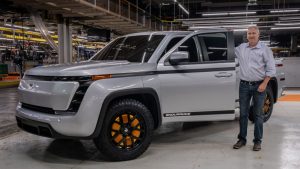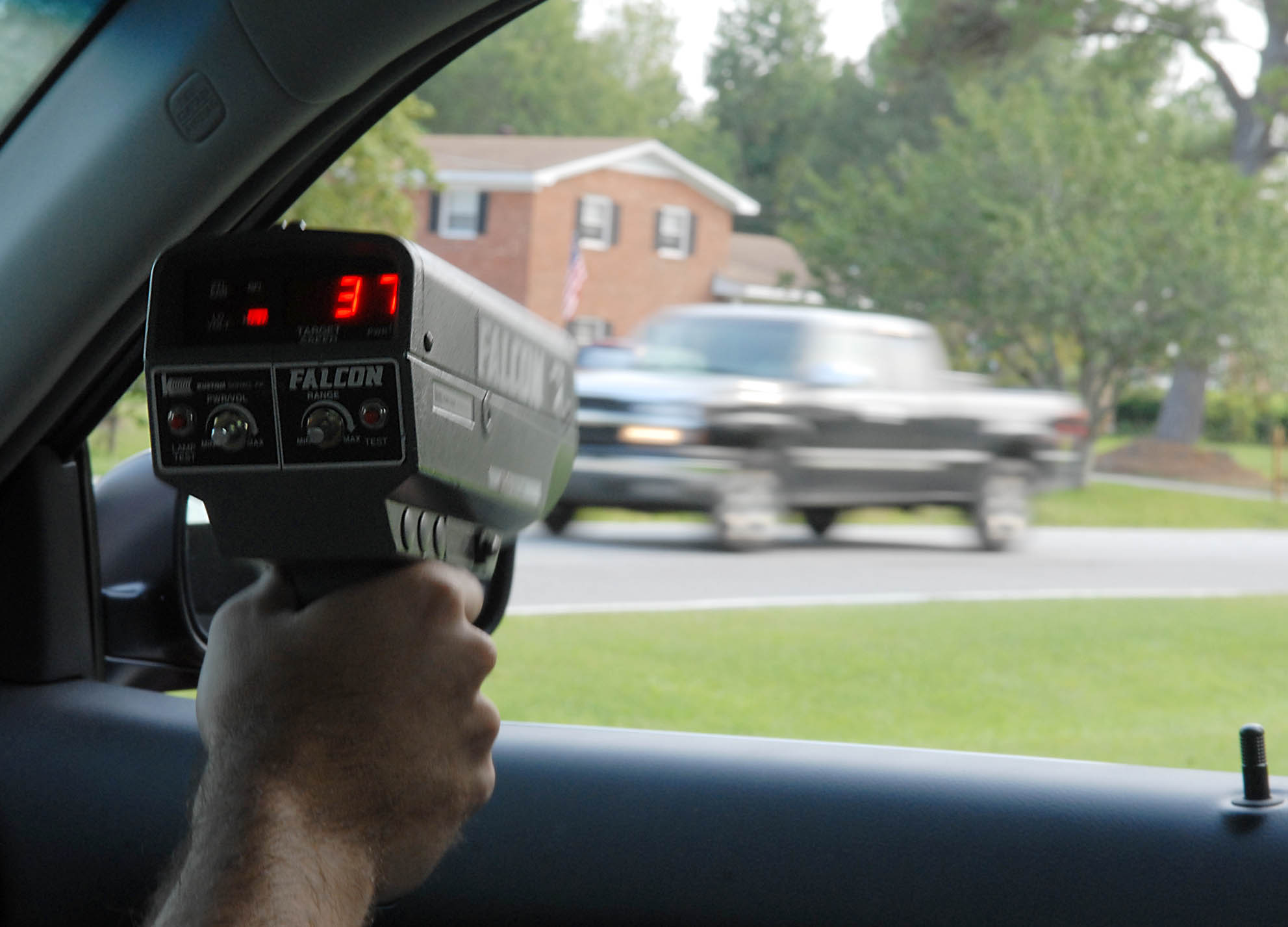Electric cars have trouble maintaining momentum for very long but at least when they run out of range, you just stop.
In an electric airplane, you drop.
It seems like a really bad idea, yet it’s one United Airlines reportedly just bought into – probably for many millions of dollars (the actual sum hasn’t been disclosed). It will “invest” in the development – italics to emphasize the nonexistence at present – of the ES-19, an electric aircraft that exists on the drawing board only. This hypothetical aircraft is being developed by a Swedish company with the cloying name, Heart Aerospace – which summons images of kumba-ya’ing around the campfire in a collective hug.
But will it fly?
If electric cars are any indication, this will prove to be an airborne belly flop even more epic than the Lordstown Motors fail – in which GM got gypped into supporting the development of electric trucks that never materialized but which the supposed manufacturer thereof is alleged to have received numerous “pre-orders” for, sight unseen.
Ah yes, my little chickadee!
GM “invested” $75 million and gave a sweetheart deal on the old not-electric car factory at Lordstown, Ohio – where GM used to actually make cars. When the hilariously named susser-out of corporate shenanigans, Hindenburg Research, published a report earlier this year accusing Lordstown Motors of pretending to have orders for electric trucks it hadn’t built, confidence in the company cratered and GM pulled the . . . plug, leaving Lordstown a burnt-down cinder, kind of like an auto-immolating Chevy Bolt (also hilariously named).
As of the end of the first quarter of this year, the company conceded net losses of $125 million – and had to report to the SEC earlier this month that it “may no longer function as a going concern.”
And those trucks only had to roll.
One wonders how an electric airplane will fly – given the known and persistent technical problems maintaining horizontal momentum using battery power. An aircraft must get into the air and then remain there. If it runs out of energy while it is in the air, it will not remain long in the air. The good news is that a fixed-wing aircraft can glide but the bad news – for our putative electric airplane – is that the heavier it is, the less it can glide.
And this brings us to the rub.
A typical electric car battery weighs about 1,000 pounds. That is what it takes to move a small electric car like a Tesla 3 an advertised 263 miles; how far – how long – will an electric airplane go, with batteries that will necessarily weigh much more in order to get all of that weight off the ground and into the air?
And advertised EV mileage is not the same as the mileage advertised by gasoline-powered vehicles. Or jet-fuel-powered airplanes, either.
An electric vehicle’s range is hugely affected by variables such as the speed one drives (or flies) and the conditions one drives (or flies) in, factors which affect combustion-engined vehicles far less.
For example: A not-electric car’s range on a full tank of gas will not markedly deteriorate from what is advertised in the winter, when the heater is in use – because in a not-electric car, the heat is essentially a free byproduct of the running engine whereas in an electric car – or airplane – the heat is produced electrically, as by a baseboard heater in a home. But instead of drawing power from the utility company – which will keep the power coming (so long as you pay the bill) in an electric car, use of the heater and other electrically powered accessories (which is all accessories, including the AC) draws electricity from the battery, which has a fixed amount of charge – and that leaves less electricity to power the wheels – or the props – which means your range decreases.
Very cold (and very hot) weather also negatively affects battery performance, further reducing range.
It is claimed that the ES-19 will have a range of about 250 miles – which is just barely enough to make the short hop from DC Dulles to a regional airport such as Roanoke, in SW Virginia. With very little margin to spare. What happens if the plane needs to circle, as because of traffic or weather?
Maybe it would be a good idea to equip this one with parachutes rather than flotation devices.
People who know airplanes raise other pertinent questions, such as the drain on the electric airplane’s batteries during taxiing from the terminal to the runway, which as anyone who flies commercially knows sometimes takes half an hour or more. All the while, the heat or AC must be running, in addition to the lights and all the plane’s electrical systems. Does the advertised 250 mile range factor these considerations in?
The FAA nominally requires redundancies and margins-of-error for commercial aircraft especially. It is why, for instance, commercial aircraft that fly over the ocean must be able to remain in the air if one or more engines cut out.
What if the batteries cut out?
Which – it bears repeating – it is more likely to because an electric airplane will necessarily be heavier than a jet-powered airplane because of the massive weight of the batteries that will be necessary to drive electric props sufficiently powerful to get it in the air. But the weight of all those batteries will necessarily reduce the amount of time it can remain in the air. 
If it smells of unicorn farts, you’re nose is working. But it may be the image rather than the actuality that United is buying into. As in, see how committed we are to being green. That it will cost a great deal of green is certain, these costs surely to be passed on to people who fly in actual airplanes that actually do fly.
And it is probable there will be other costs as well, perhaps measured in red – when the batteries wilt and the green no longer flies.
. . .
Got a question about cars, Libertarian politics – or anything else? Click on the “ask Eric” link and send ’em in!
If you like what you’ve found here please consider supporting EPautos.
We depend on you to keep the wheels turning!
Our donate button is here.
If you prefer not to use PayPal, our mailing address is:
EPautos
721 Hummingbird Lane SE
Copper Hill, VA 24079
PS: Get an EPautos magnet or sticker or coaster in return for a $20 or more one-time donation or a $10 or more monthly recurring donation. (Please be sure to tell us you want a magnet or sticker or coaster – and also, provide an address, so we know where to mail the thing!)
My eBook about car buying (new and used) is also available for your favorite price – free! Click here. If that fails, email me at EPeters952@yahoo.com and I will send you a copy directly!












Increasing the weight of your aeroplane, does not reduce its gliding range. It’s the ratio of Lift to Drag which determines this. (caveats apply, but heavy aeroplanes can and do, glide very well, tho at high speeds)
Like some of your other commentators, I have quite a bit of experience with electric flight at the level of model aviation.
I’ve seen several electric models catch fire … in the air, and on the ground. It’s usually reckoned to be the result of failures in the Electronic Speed Controller (device which creates the appropriate electrical input to the brushless motors). A couple of times, I’ve seen fires post-crash, when a battery has been punctured. The fires are always very fierce, and usually consume the whole of the airframe.
One of the worst aspects of electric flight, is the way that the available power declines. As the battery’s charge is consumed, a given throttle position provides less power. Toward the end of a flight, you may have the throttle wide Open, but the motor will produce next-to-no-Power. The pilot can never associate the physical position of the Throttle, with the Power setting. (maybe they can come up with a technical work-around for this)
With an IC engine, as long as there is some fuel in the tank, you will get Full Power, every time that you advance the throttle.
In my experience, electric flight comes into its own when coupled with a clean airframe, like that of a glider. That can be made to work quite well, at model scales. But, it brings a whole new set of problems if you want to carry freight or passengers.
Further, electric flight effectively constrains you to the use of Propellers. It follows that these aircraft will most probably be developed for lower-level flying … which is less efficient, and puts you amongst the Weather.
Having said all that negative stuff, I must concede that there are some clever sods out there, and they do have a habit of surprising me from time-to-time.
Bogbeagle,
I admit, I went down the rabbit hole on this one, and now very much want to get back into radio-controlled aircraft, not that I ever DIDN’T want to.
I thought that a flying wing (B-2, YB-35) design might be best, as it provides efficiency and plenty of surface area on which to put solar cells.
This guy had already done so, and in the below video, flew it 110 miles!
https://www.youtube.com/watch?v=vYeYZpBE51I
Now, with regards to low altitude, see my below comment on the Helios Project. 😉
And, as I said, these designs might not be worth a damn for passenger flights, but then, if I had a few hundred million lying around, I might try and commission a solar-electric YB-35 build anyway. 🙂
Though electric planes won’t be replacing jet airliners anytime soon, it appears solar-electric planes have their niche, and China is making entry into that arena as well:
https://www.thedrive.com/article/11132/chinas-new-solar-powered-drone-sets-domestic-altitude-record
Drones. Read: cheap surveillance satellites.
The American “Helios project”, concluded nearly 20 years ago, was even more impressive.
“On Aug. 13, 2001, the Helios Prototype reached an altitude of 96,863 feet, a world record for sustained horizontal flight by a winged aircraft. The altitude reached was more than 11,000 feet, or more than two miles above the previous altitude record for sustained flight by a winged aircraft.”
Although crawling along at low altitudes, the aircraft could reportedly go “up to 170 mph ground speed at extreme altitude”.
This is just more bandwagon nonsense. Imagine if they used this development money to improve their industry instead of producing more ridiculous vaporware.
Flying saucers fly on electrical power of some sort. But they also have some sort of zero point like energy and don’t use aerodynamic lift.
Ummm… Citation needed?
Hi Brent,
In re saucers: I’ve read they used electromagnetic field generators of some kind to induce a local ant-gravity “bubble” around them. They definitely don’t run on batteries!
They run on Eludium 238!
Hey, anyone remember the e-APU-equipped Boing 787’s that had LiIon battery meltdowns, fires, etc? The whole fleet grounded? Smoke and ECAM messages? Now, imagine if instead of just ancillary functions, your batteries are big enough for propulsion supply use. One poorly tested cell, and thermal runaway, here I come.
United Airlines is also considering buying supersonic planes even though the Concorde proved to be ridiculously expensive. Just proves that United management lives on a different planet.
Mike,
The Concorde WAS pretty cool, though. Sometimes I see that plane in old movies and it seems that we were somehow MORE advanced back then than we are now.
…Also, it was cool until it turned into a flaming meteor, that is.
The concorde turned into a flaming meteor thanks to a United Airlines jet that shredded its rubber onto the runway.
Continental, the DC10 that shed the aileron wear strip that instigated the Concorde incident. Yeah, Continental got sucked into United later on (much to the chagrin of the flying public at IAH), but it was CO55 that dropped the wear strip.
Not to mention they’ve commiteed to 50% diversity hires for their new pilots
Hi Mark,
Watch this for a glimpse into the future of Air Diversity: https://www.youtube.com/watch?v=0h_cqTCT5g0&ab_channel=BadGoy
There is no escaping the law of diminishing returns. Adding battery storage adds weight, which requires more batteries, which adds weight, which requires more batteries, etc. Ending with a thing on the tarmac that looks like an aircraft but is essentially a big battery storage structure.
“… I’ll work extra hours, so I can make more money, so I can buy more cocaine, so I can work more hours…”
Yes! I was just thinking about that little PSA today, as a matter fact, haha!
I would laugh at the complete ridiculousness of an electric airplane, an idea even more stupid than the electric car. But then I imagine all the wealth being wasted on these projects that will produce nothing and leave us poorer for it all.
Other things to think about: Batteries suck when it gets cold. Forget an electric car in the winter when it’s 20 degrees F. Planes need to fly high where there is less air friction. Think about a plane (summer or winter, doesn’t matter) at 35,000 feet where it’s 65 degrees below zero F. Plane batteries will obviously need to be heated. Where does that heat come from? The batteries, limiting range even more so.
Also, a fuel-powered plane actually gets lighter as it flies and burns fuel, the fuel being a major component of its weight at takeoff. A fuel-powered plane gets easier to fly, and cheaper, as it approaches its destination, and so can handle circling or re-routing a lot better than if it were full. An electric plane is always “full”.
Two words:
Lightning Strike
“It seems like a really bad idea, yet it’s one United Airlines reportedly just bought into – probably for many millions of dollars (the actual sum hasn’t been disclosed). It will “invest” in the development – italics to emphasize the nonexistence at present – of the ES-19, an electric aircraft that exists on the drawing board only.”
Bwaahahahahahahahahahahaha! Geez, sure wish I had the balls to pull off a scam like this. I wouldn’t even need to milk it all the way to billions, I’d be happy taking a couple million salary and having the company fold. My God, are woke businesspeople incredibly stupid!
The world’s second greatest thrill is flying, the first greatest thrill is landing.
Simple solution, have two planes, one full of batteries, the other for the cargo or passengers. Tether the battery airplane to the primary vehicle to carry the load, there can be wires to the cargo plane’s electric motors make the passenger plane fly along with the battery plane. If the batteries catch fire, you can disconnect the tether and glide or nosedive, whichever comes first, either to land or crash. At that point, it will make a difference.
Who in their right mind would board an electric plane full of batteries? Jump that shark.
Jet fuel trumps electricity hands down, every time.
How about forget the whole idea and come back down to earth?
So the problem is three fold. Weight, range, fire. Over simplified yes, but if an new battery technology is discovered that drastically reduces the weight and flamabilty, the range would also dramatically increase. This maybe pie in the sky thinking, but we have made huge breakthroughs in the past.
We’ve also lost billions trying to get pie from the sky, and failing to do so.
‘This maybe pie in the sky thinking, but we have made huge breakthroughs in the past.’ — Oskar
Fresh outta engineering skool, I would have insisted that electric airplane designers surely have done basic textbook calcs to ensure usable range despite the battery weight penalty.
But then one sees outright frauds like Elon Musk’s Full Self Driving sold to the public for years when it doesn’t function as promised.
And one has to conclude not only that fraud pays, but also that some highly touted new ventures are nothing but smoke-blowing by people whose greatest personal achievements may be in the fields of online poker and securities fraud rather than aeronautical design.
If the tagline of their road show is ‘Come fly with me’ … RUN!
FYI
Back in my flying days I run across a few small Cessna’s (150s and 172s) equipped with a parachute in case of engine failure.
I find it interesting. No time this morning, but if you used Li-Po batteries, the weight would be decreased to a minimum, though the fire danger would increase greatly. You’d have to have a way to “jettison the core”, ALA Star Trek, in case of overheating/thermal runaway. Then, you rain down flaming batteries on whatever is below.
Now, with the proper design, you could outfit the plane with solar panels, and if it flies only during the day and above the clouds, you might have decent range, and nice leisurely flight. Practical, it might not be, however. 😉
Re: solar panels.
hahahahahahahaha……………………………………
On a plane? Like a total of like 800 sq/ft? hahahahahhhaaa……………………….
do the math. maybe power one little e-motor.
“Modern solar panels are around 15% efficient, so that works out to approximately 150 watts per square meter, or 15 watts per square foot.”
so 800 sq ft x 15 watts – 12,000 watts, now divide by 480v = 25 amps.
No offense BaDnOn, but solar is almost never what they say it is.
Well, Chris, this one flew around the world (no, not all at once), and they stated “The plane could fly almost perpetually but the pilots cannot, due to the gruelling conditions aboard.”
Now, it carried only one man and was abysmally slow (~30MPH). But I’m simply talking about an extension of range. Again, this isn’t about practicality.
That plane didn’t really “fly” around the world. It was more of a glider, and it glided (glode?)
Anyway, sailplane pilots are skilled in finding and taking energy out of updrafts that occur naturally on the surface. They can stay up for hours if they read the drafts correctly, even without any solar panels.
My guess is that they found updrafts when they could and charged their batteries during the day, then used that power to run their puny little motors at night when there is less energy coming from the earth.
Also notice that they went east, which means they could catch the jet stream. Try to do the same thing in a commercial aircraft from LA to Denver.
Sorry. West, from Demver to LA. That would be against the jet stream.
Copy on “glode”. Added to lexicon. 😉
Oh, the link for the quote and info:
https://www.theguardian.com/environment/2016/jul/26/solar-impulse-plane-makes-history-completing-round-the-world-trip
Meant no offense BaDnOn, I just go a little crazy when people say ‘solar’, anything.
Seen that plane. One man’s weight really didn’t accomplish much other that to say they did it, at huge expense. But Rome wasn’t built in a day.
All anyone has to do if they care to learn the truth for commercial aviation purposes, is find out how many BTU’s are used in a normal 2 hr plane flight. Easy to calculate with knowing how much aviation fuel is used. I just don’t feel like doing it right now. Then convert to watts and go from there. Guessing out loud you would need about a bazillion acres of solar panels, haha…………..
No replacement exists for natural fuels (oil, etc…), not even close, other than nuclear.
Chris,
And you’ll have to learn that I like to try and engineer implausible things for NOOO reason. 😀
It would be much easier to synthesize jet fuel from biomass, if you were trying to fly “carbon neutral” airlines. Perhaps you could’ve used all the forest that is being lost in California to wildfires lately!
And no, you won’t replace easily replace carbon fuels with anything feasible at this time and reproduce your typical airline flight. BUT, for me it is fun to image the possibilities.
Maybe time to revisit the atomic-powered aircraft that were planned in the 1950s until cooler heads prevailed. What’s the problem with spewing a little atomic waste as long as you’re not emitting any of that nasssssty CO2? 🙂
https://www.youtube.com/watch?v=9Jt924xjaJo
Meanwhile, gazillionaire “climate change” hysterics Jeff Bezos and Richard Branson take off in a rockets, pushing out huge amounts of CO2 into the atmosphere to fuel their personal fantasies of traveling in outer space. Sacrifice in the fight against ManBearPig is for the little people.
I’m fairly certain this idea was put forth without any intent to ever see one fly. Everything about electrical power storage for battery powered systems is diametrically opposed to this aircraft flying, period, much less for any distance.
Although it does look good on their Green qualification sheet.
Aren’t fires on an aircraft a serious problem? Such that years ago, you had to declare your Samsung Galaxy, whose battery tended to overheat and burn. So we are going to build airplanes with ready-made ignition sources throughout the superstructure? Maybe they can graft this onto the 737 Max 8, to enable it to reach the ground faster when a fire starts.
BAC,
Not only that, certain Samsun devices were outright PROHIBITED! The danger they posed was so serious that they were forbidden on airliners.
Just give it a reeeeeeeeeeeeeeeeeaaaaaaaalllllllllyyyyyy long extension cord.
Problem = solved!
And blow up the grid while they’re at it. lol
We don’t need no stinking jet fuel. Haven’t you seen “Star Trek”? “Mr Data, ahead warp factor 9. Engage!”
Now where did I put those Dilithium crystals?
Eric,
There’s an air taxi outfit in the Pacific NW (Vancouver area, where there are many islands, IIRC) using electric airplanes. They use a modified Cessna Caravan or similar aircraft. That said, the flights and distances are short. Air taxi is also on-demand; it’s not a regularly scheduled operation as is an airline. Under those conditions, an electric plane works fine.
For commercial airline service though, I don’t see how an electric plane can work. Forget about the short range; forget about the extra battery weight; forget about headwinds or tailwinds; forget even having to circle or hold prior to landing; what happens if you need an alternate airport? Under certain circumstances, an alternate airport is needed.
Airliners normally operate under IFR flight plans, since they’re normally flying above 18,000 feet, or Flight Level 180 as they call the higher altitudes. If flying under IFR, then, at certain times, an alternate airport is needed. If, from one hour before to one hour after the time of arrival, a ceiling of 2,000 feet above ground level is needed, along with 3 miles of visibility at the destination. If those conditions aren’t forecast to be available at the destination at ETA, then an alternate airport is needed.
So, what does that mean? It means not only does the airliner have to fly to its destination; not only does it have to be able to fly to the alternate airport; it also has to be able to continue flying for 45 minutes thereafter. Ah, but that’s not all; there’s more!
If an alternate airport is needed, it’s most likely due to bad weather at the destination. Why does that matter? Well, the alternate can’t be too close to the destination, because if a major weather system is responsible for bad weather at the destination, then the surrounding areas are likely to be socked in as well. I’ll give you an example…
Say you’re flying from Dulles up to NYC, so your destination airport would likely be LGA, or LaGuardia, since it’s closest to the city center. LGA is forecast low visibility at ETA, so an alternate is needed. No biggie, you’ll just go to EWR or JFK, one of the other two major NYC area airports, right? WRONG! EWR, LGA, and JFK are all very close to each other; they’re only minutes apart by air. SO! Whatever bad weather is affecting LGA is affecting EWR and JFK as well, so the alternate will have to be farther away. MacArthur Airport (ISP), in the middle of Long Island, might be a go; so will PHL in Philly. ABE in Allentown, PA is a popular alternate for diverted NYC area flights.
Also, when selecting an alternate, the question has to be asked: does the airport have the FACILITIES to handle passengers and baggage? Does it have working instrument approaches that the aircraft can use? There’s more to it than the question of whether the runways, in terms of length and weight limits, can handle the aircraft; the right equipment and facilities must be available too.
So, what does that all mean? If we’re expecting IFR conditions at LGA at our ETA, then we’ll need an alternate. Since ABE is often used, we’ll go with that. That means the airliner will need sufficient fuel to travel from IAD to LGA; it’ll need fuel to continue flying to ABE; then, it’ll need enough fuel to continue flying for 45 minutes once you GET to ABE!
Oh, and there’s yet another fly in the ointment! I don’t know if you know this, but airliners don’t normally fly with full fuel; they fly with only the fuel needed for that flight. Why? More weight=more fuel needed. While there are aerodynamic reasons behind this, I don’t get in to the weeds about that here. IOW, it takes fuel to carry fuel.
Fuel amount is also limited because the airplane can only lift so many pounds in the air; once that weight limit is reached, then the weight has to be reduced to bring the aircraft back within limits. Weather conditions, in part, determine this. On hot, summer days, the air is less dense, so the wings don’t make as much lift. The same applies to higher altitude airports, where the air is thinner. For example, if one is flying from Denver in the summter time and making a long flight, then the airline may not be able to take a full load of passengers and bags. In order to keep the aircraft within its operational limits, passengers, bags, and cargo may have to be removed. The last thing an airline wants to do is remove payload, since that’s what’s earning the airline its money in the first place!
With all those variables involved, how can one possibly be able to us an electric airplane for commercial, scheduled airline service? I don’t see how it’s possible. There are simply too many variables. Electric airplanes will have to carry the full weight of batteries all the time; if they don’t need all that energy for a shorter flight on a clear day, then energy will still be needed to carry the battery pack weight. There’s also the matter of alternate airports to consider. Not only do you have to fly to the destination; not only do you have to deal with headwinds or tailwinds on the way there; not only do you have to fly to the alternate; you have to have enough fuel to continue flying 45 minutes AFTER you get there! How can those requirements be met with a battery pack whose energy content is fixed? It can’t.
As I said earlier, for short distance, on-demand, non-scheduled air taxi flights done in visual conditions, electric airplanes can work. In fact, they already do; there’s an air taxi operator using electric aircraft to conduct short flights between the islands in the Vancouver area. That’s because the distances are short, and because they don’t operate on a schedule. They fly when you want, then sit until they need to fly again. While they’re waiting, they can recharge, since they don’t HAVE to be in the air again in minutes as does a scheduled, commercial airline does. Electric aircraft can work in air taxi service.
What I can’t figure out is why there’s a push for electric airliners in the first place. Major strides have been made in jet engines; modern engines emit less noise, less NoX, less CO2, and burn less fuel. A great example is the Pratt & Whitney Geared Turbofan, or GTF. It’s a WONDERFUL engine! It’s made double digit reductions in fuel burn, emissions, noise; everything. It reduces NoX emissions by 50%; that’s great! You can learn more here: https://pwgtf.com
In closing, electric aircraft cannot work in regularly scheduled, commercial airline service. There are simply too many variables. Electric planes can and do work in short distance, unscheduled, on-demand air taxi service, but that’s a different type of operation altogether. Finally, electric planes aren’t needed for scheduled airline service, given the major strides that have been made with modern jet engines. Modern jet engines give you more of what you want (performance and range), and less of what you don’t (emissions and fuel burn). A great example of this is Pratt & Whitney’s GTF. It’s a huge improvement over other engines, and it’s only in its infancy; with all the growth potential the GTF offers, it’ll only get better in the future. Those are my thoughts…
“Electric airplanes will have to carry the full weight of batteries all the time…”
Great point, Mark. With a unicorn plane, there’s no such thing as “just enough” energy, weight-wise. And of course aircraft will have to be built to withstand landing with all of that weight, every time, whereas conventional airliners can take off at a heavier weight than they can withstand on landing, since they lose most of the fuel weight during flight.
I’m afraid the argument about the decreased emissions of modern jet engines will not fly, so to speak, with green nutcases. The same argument can be made for IC cars, and they’re still hell-bent on getting rid of those.
I FORGOT to mention the landing weight! Though that mainly pertains to larger aircraft, the landing weight is often significantly less than the takeoff weight. With a jet aircraft, much of the weight is burned off in fuel enroute, so it’ll be at or below its max landing weight. A battery powered aircraft won’t be able to do that, since the battery weight never changes.
Roland,
Another downside to a battery aircraft is that, since its weight doesn’t reduce in flight, it’ll have to be built with stronger, heavier landing gear, which will add weight. That’ll reduce range even further.
Here, scaled down, the “green” future of commercial aviation. Melted wiring crashed the first flight. After repairs, a 3-minute ride consumed 38% of the battery.
https://youtu.be/EvDbhInfS2c
I think hope lies in the East. The Russians aren’t abandoning their Samara NK321 turbofans and aren’t teaching their little boys to be little girls and their little girls to like other little girls.
As someone who grew up in the height of the Cold War, and to fear the Russkies, I find it strange that these days, I often contemplate the idea of having to defect to Russia or the former Soviet countries just to escape or have a chance at some semblance of a life for my children. Frankly, I find the people most opposed to the nonsense and degeneracy radiating from Red Giant Amerika are those from Poland, Finland, Hungary, and Russia. It’s like they know or something.
“It’s like they know or something.”
Ask any soy latte drinking, tofu eating, skinny jeans wearing gender studies major and they’ll tell you with a straight face that it’s because those countries didn’t do real communism and this time we’re going to do real communism the right way in this country .
Roland,
That is actually a pretty righteous little model. With the performance of that plane, I reckon it could take 3 or 4 times that battery capacity. Just a guess. 38%/3min ~ 12.7%/min. 12.7%/ 4 = 3.175%/min for 4x capacity battery pack. Dropping the batteries down to 20% capacity per flight to preserve their lifespan would yield 80%/(3.175%/min) ~ 25 minute flight, which is pretty decent for a radio controlled plane. Of course, the extra weight would cause a decrease in performance and flight longevity, and there are other suppositions swept under the rug, so it’s not an entirely accurate figure, but hell. Looks fun to me.
I used to fly the nitromethane-powered versions when I was younger, and I admit, they sounded a little more satisfying. But I don’t remember flying for more than 15 minutes or so, so 25 minutes would be ample for a nice little outing.
Yep, it’s an impressive project. Amazing that it flew so well right off the bat. My Mavic Pro Platinum can go almost half an hour on a battery, but it doesn’t look nearly as cool.
Wow, 250 miles? What a joke!
I’m not an airline pilot, but I play one on my desktop simulator. When planning a flight, you always load enough additional fuel to make it to an alternate airport, plus a little extra. With a similar safety margin in an electric airplane, you might be able to fly from Philadelphia to, uh, suburban Philadelphia.